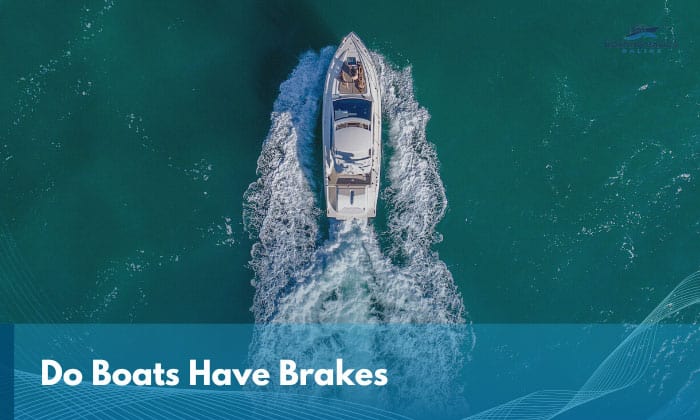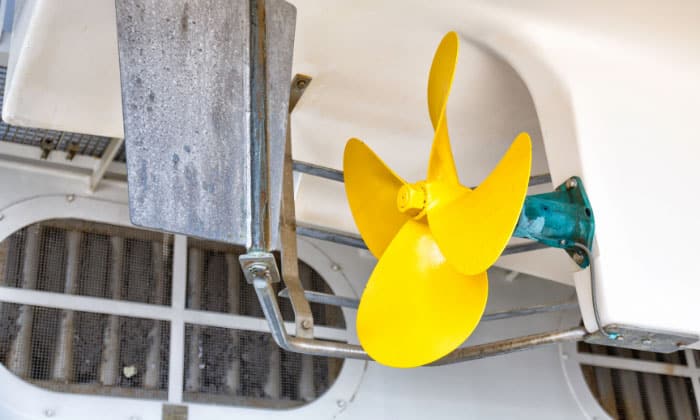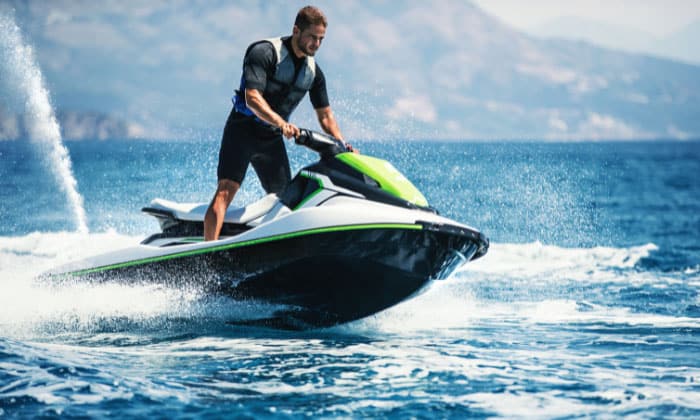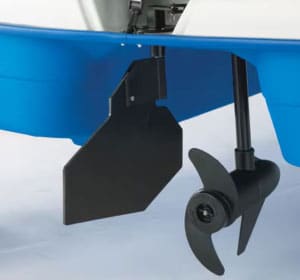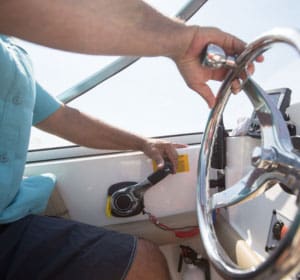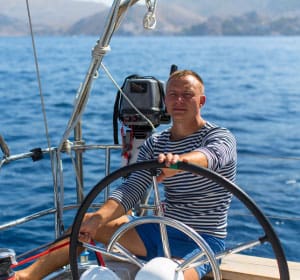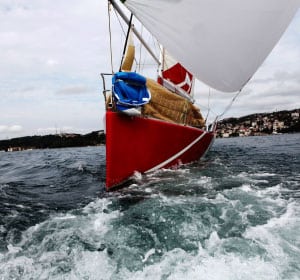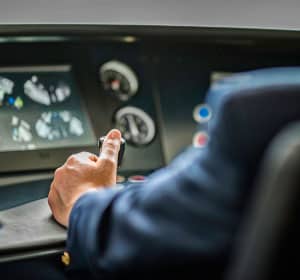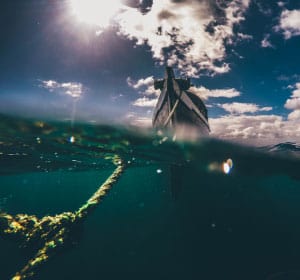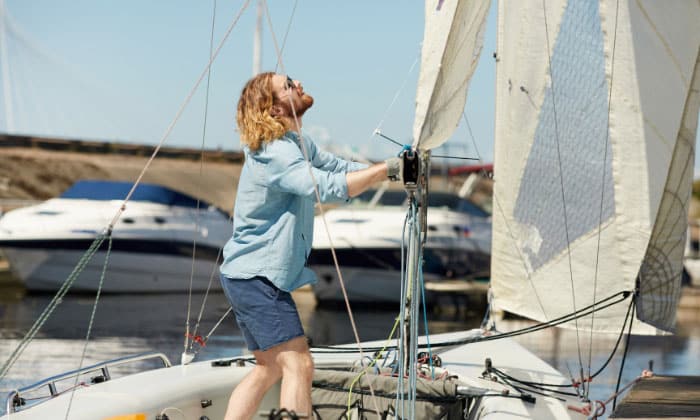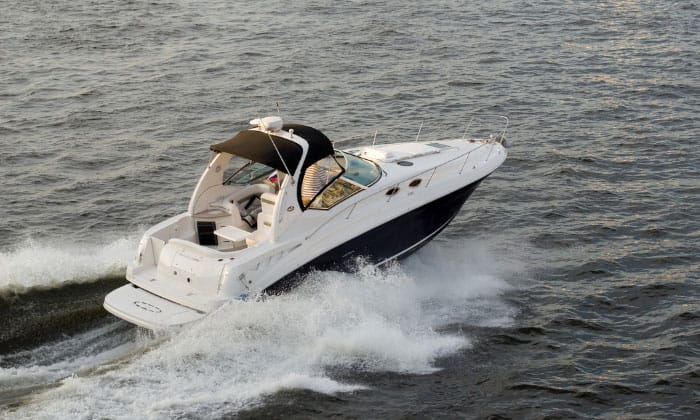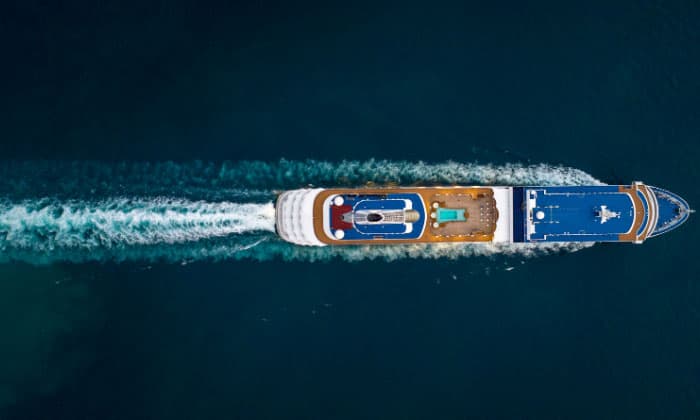Almost every vehicle we know, from the humble bike to the ever-reliable car and airplane, has brakes. As such, I don’t fault people who wonder, “Do boats have brakes?”
No, boats don’t actually have brakes – at least, in the conventional sense. You either halt the propeller or lower your sails to slow down. Most motor-run vessels have to be put on neutral and then reverse to slow down, while sailboats need to move upwind and luff their sails. Dropping the anchor results in faster stops.
Table of Contents
Why Boats Don’t Have Brakes
The main reason why boats don’t need brakes is that they float on water. To elaborate, water has a shearing tendency—the variation in the liquid’s shape when a force is applied. This makes it virtually impossible to brake in water.
To further understand why these vessels don’t have breaks, we need to compare them to cars, which have brakes that most of us are more familiar with. With a car, you travel on solid and unchanging ground. Because of this, the braking system that suits it the most is one that will create friction between the wheels and the road.
Now, imagine doing that on a boat floating on water. That’s virtually impossible since water doesn’t provide the same kind of stable surface that can create similar friction.
Note that I used the word “similar”. That’s because it’s actually possible to create friction between the boat and the water, and that’s what we call drag. That’s what boats use to slow down when they perform the maneuvers above and the ones I’ve explained in greater detail below.
The Case of Jet Boat “Brakes”
Dissenters may say, “What about jet boats? Their manufacturers clearly state that they have brakes, right?” Well, yes, but fundamentally, they also don’t work like traditional brakes.
They work by allowing the PWC to quickly reverse even while it’s sped up, thus, slowing down more efficiently and stopping more abruptly than a conventional boat. To put it simply, jet ski brakes work by reversing the direction of the water flow. If you do that with a car, you’ll likely just stall the engine.
Did you know that there are various braking systems designed for jet skis alone? I’ll explain more about how each one works and answer the equally vital question, “How do ships stop without brakes?” as follows.
Alternative Ways to Stop for Boats
Now that I think about it, I find it pleasantly surprising how many effective methods have been developed to stop a ship in water. We owe it largely to the vast number of different types of watercraft now available.
Methods for controlling boat speed
1. Rudder cycling
A technique employed in most large ships with a rudder, rudder cycling involves repeatedly turning the ship hard to port and starboard to slow it down.
- High-frequency rudder cycling uses rapid alternating turns from port to starboard, leveraging the inherent delay in the vessel’s turning response. The delay between the rudder movement and the actual change in direction allows speed reduction without changing course.
- For a more drastic decrease in speed, operators make use of low-frequency rudder cycling. Basically, it also involves the same cyclical turns but much slower. This results in the ship actually turning (up to a 40-degree angle) to create more drag.
2. Shifting to neutral, then reverse
Basic motorboat speed control often means just shifting your gear. This is as close as boats can get to pressing on a brake pedal on a bike or a car to slow down either one.
Shifting to neutral kills the propulsion by disengaging the transmission from the engine. At this point, the boat will gradually slow down as it coasts based on the momentum – until it stops due to water resistance. This maneuver is related to the inertia stop, which involves shutting the engine down completely.
Boat operators who want a quicker slowdown will shift to reverse. The prop rotates in the opposite direction as before. The force created opposes the boat’s momentum, leading to a more effective slowing down and subsequent stoppage.
Of course, don’t forget to shift the gear lever from reverse if you don’t want to actually go in the opposite direction!
3. Turning under full helm
This is usually only done when the vessel needs to do an emergency stop, such as when it might collide with a ship that’s still a good distance away. You basically go hard over and let the ship turn in the opposite direction.
This results in a pronounced increase in drag caused by the angle between the vessel’s heading and the direction of momentum. This is only advisable if you have plenty of room to work with.
4. Crash stop
This is usually used only as a last resort as it often leads to loss of control of the vehicle. When a ship performs a crash stop, it promptly goes full astern. Once you do this, you essentially make the rudder useless, as the water flow will completely shift in the opposite direction once the prop starts reversing.
It will work in stopping any ship, though, and is recognized as an actual emergency maneuver. It’s way too risky, though, and sudden stops are often dissuaded at large.
5. Controlled speed reduction
Most passenger and cargo ships often have their entire voyage mapped out, including the exact points in the journey where they’ll start reducing the engine’s power. This allows them to slow down from the moment they start nearing their destination all the way to when the ship stops at port.
This is a smarter and safer maneuver as it maintains the boat operator’s control of the vessel the entire time.
6. Dropping anchor
This is one of the more no-nonsense and simple ways to reduce a boat’s speed and stop it quickly. Their flukes are designed to dig into the ground more, the more the chain is pulled. Each anchor also has its own holding power that affects how much opposing force it can resist.
Read more: Best Way to Stop Your Boat
How Sailboats Control Speed and Stop
Sailboats trim their sails by adjusting the position and angle of their sails. They harness the power of the wind to propel the vessel forward or slow it down.
Most sailboats simply need to release or furl some sails to eliminate the driving force of the wind. Others opt to come into the wind to reduce forward momentum and, in turn, stop.
Different Jetboat Slowdown and Stopping Mechanisms
Some jet skis, especially older models, still rely on reversing as a means of deceleration. However, the exact mechanism in a jet engine is quite different in that the jetboat instead changes the direction of the stream from the impeller. This leads to increased resistance and drag.
As for those with more specialized braking systems, such as SeaDoo’s Intelligent Brake and Reverse (iBR) and Yamaha’s RiDE, certain components play a unique role in slowdowns. For instance, with the RiDE system, Yamaha boats are able to enjoy intuitive deceleration using a dedicated lever.
Here’s a video explaining how SeaDoo’s iBR technology works:
Safety Measures for Boat Control
- Take the time to learn how to drive or sail your specific boat properly. This includes familiarizing yourself with your vessel’s capabilities and limitations.
- You must know how to operate the engine, throttle, rudder, trim tabs, sails (if operating a sailboat), etc.
- Master the handling of boats depending on their current speed.
- Learn to time your turns and when to shift gears. Remember that boats typically need more room than most land vehicles when making turn
- Be mindful of your surroundings and weather and water conditions.
- Adhere to maritime regulations.
- Always wear PFDs, such as lifejackets.
Estimate the Stopping Time of the Boat or Ship
How soon a ship stops is primarily dependent on its mass and the amount of cargo it’s carrying. Stopping time is related to stopping distance in that the more massive the vessel, the longer and farther it takes to reduce its speed and, consequently, come to a halt – at least, if we’re not factoring in engine power.
Boats that run on diesel engines can sometimes be the exception to the rule as they generate more torque at low speeds and can actually have the same power output in reverse as in forward.
Keep in mind that most skippers don’t think in terms of time to stop, but rather, in distance. For example, an average cargo ship may choose to stop its engines 10 miles out, and it will always approach the dock at around 4 knots.
Of course, that is if it’s a cargo ship and there are no other outside factors to consider. Other than size, here are the others you should note:
- Windy conditions and boats with an overall large windage area may make it more difficult to slow down or stop, especially for sailboats.
- A vessel with hull fouling tends to stop sooner compared to boats with smoother hulls.
Conclusion
With everything considered, the question, “Do boats have brakes?” ties in with better boat navigation. After all, plenty of the maneuvers said above require an in-depth knowledge of how each boat equipment or component works and the effect it will bring about once triggered.
What’s sure is that some allow you to maintain control as you would when driving a car, while others are far more extreme, to the point that they’re only recommended as a last resort.

“My intention from the first day establishing Boating Basics Online is to provide as much help as possible for boaters who want to experience a first safe and convenient trip. So feel free to join us and share your beautiful journeys to the sea!”

